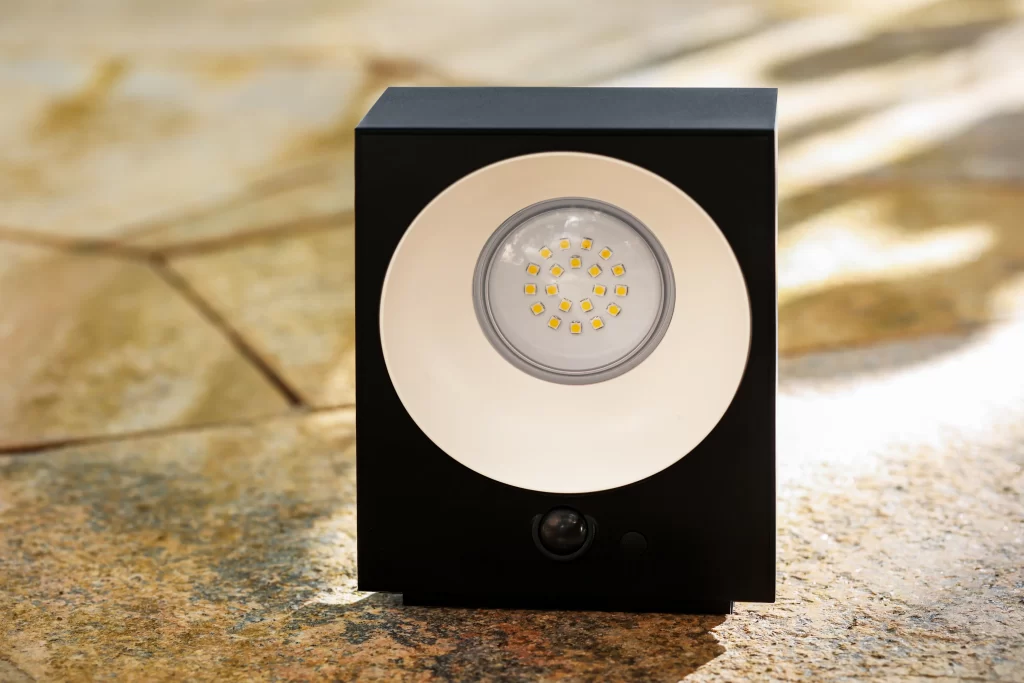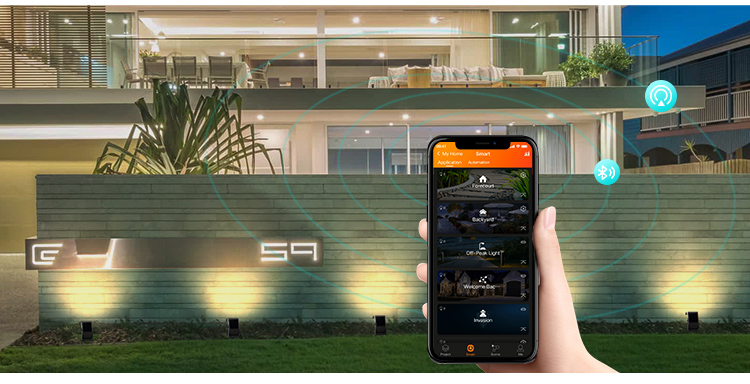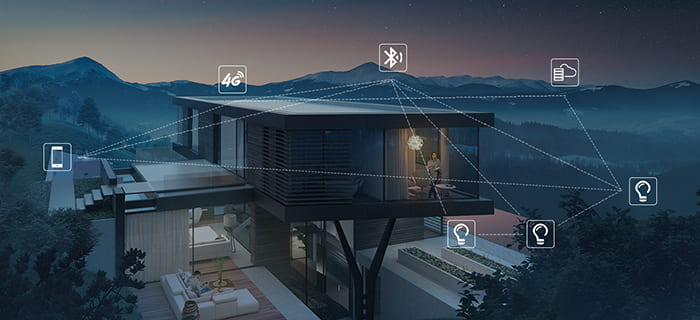In the long history of human civilization, lighting technology has always been a crucial force for social progress. From ancient torches and oil lamps to modern electric lights and today’s intelligent lighting systems, each technological leap has profoundly changed our way of life. With the enhancement of environmental awareness and the rapid development of science and technology, solar smart wall lamps are gradually entering thousands of households, contrasting sharply with traditional lighting. This paper discusses the differences between solar smart wall lights and traditional lighting in terms of energy consumption, life expectancy, degree of intelligence, environmental protection, and cost-effectiveness, providing readers with a comprehensive understanding and reference.
I. Comparison of Energy Consumption
- Analysis of the Energy Consumption of Traditional Lights
Traditional electric lamps mainly include incandescent lamps, halogen lamps, fluorescent lamps, and LED lamps. Incandescent lamps have high energy consumption, typically 10-17 lumens per watt. Halogen lamps, though slightly improved, still consume high energy and are gradually being eliminated from the market. Fluorescent lamps offer better energy-saving effects but contain hazardous substances like mercury, posing environmental risks if not properly disposed of. LED lamps, with their high energy efficiency and long life, are the current mainstream. However, even LED lights rely on the grid power supply, and their long-term energy consumption remains considerable.
- Energy Consumption Characteristics of Solar Smart Wall Light
Solar smart wall lights utilize solar panels for charging, with their efficiency depending on the quality of the panels and the intensity of sunlight. For example, the SWL-35 solar wall light uses a high-efficiency monocrystalline silicon solar panel, quickly storing enough energy for extended use. The energy storage method usually involves lithium batteries, known for their high energy density and long life. In practice, the energy consumption of solar smart wall lights is almost zero since they rely entirely on solar energy and do not consume utility power.
II. Life Expectancy Comparison
- Lifespan of Traditional Electric Lamps
The lifespan of traditional electric lamps varies by type. Incandescent and halogen lamps have shorter lives, generally lasting a few hundred to a few thousand hours. Fluorescent lamps last longer, up to 8,000-15,000 hours, but are susceptible to environmental influences and suffer from light decay. LED lights are known for their long life, theoretically lasting tens of thousands of hours. However, factors like heat dissipation and drive circuitry can shorten their lifespan in actual use.
- The Service Life of Solar Smart Wall Light
Solar smart wall lights also perform well in terms of lifespan. Their solar panels and lithium batteries are made of high-quality materials, designed with protection mechanisms to withstand bad weather and long-term use. Continuous improvements in materials and manufacturing processes further extend their service life. For example, the SWL-35 solar wall light uses a 7.4WH high-capacity lithium battery, ensuring more than 7 days of lighting even during continuous rainy periods. High-quality solar panels have a lifespan of over 25 years, while lithium batteries last between 5-10 years, giving solar smart wall lights a clear advantage over traditional electric lights in terms of lifespan.
III. Degree of Intelligence Comparison
- The Limitations of Traditional Lighting
Most traditional lighting is controlled manually, lacking intelligent adjustment. Users need to switch lights on and off manually, without the ability to realize automatic dimming or remote control, resulting in poor convenience.
- Intelligent Advantages of Solar Smart Wall Light
Solar smart wall lamps utilize modern Internet of Things technology for light control, remote control, timing functions, and linkage with other smart home equipment. Through built-in light sensors, they can automatically adjust brightness according to ambient light. Users can control the light switch and brightness via smartphone apps or smart speakers. The timing function allows users to preset switch times according to their habits, enhancing convenience. Solar smart wall lights can also interconnect with other smart home devices, creating a smarter and more convenient living environment. For instance, the SWL-35 solar wall light features light-sensing control, remote control, timer function, and linkage with other smart home devices. It also offers four different lighting modes, including continuous lighting and human body sensing mode (PIR), meeting various scenario needs while saving energy.
IV. Environmental Comparison
- Environmental Impact of Traditional Lighting
Traditional lighting has environmental issues related to energy consumption and waste disposal. They rely on grid power, consuming significant fossil energy and producing carbon emissions. Additionally, used light bulbs, especially fluorescent lamps, contain hazardous substances that can pollute the environment if improperly disposed of.
- Environmental Advantages of Solar Smart Wall Light
Solar smart wall lights, with their clean energy use and reduced carbon footprint, are significantly more environmentally friendly. They use solar energy, an inexhaustible and clean source, to achieve self-sufficient lighting, reducing fossil energy consumption and carbon emissions. The production and disposal process also emphasizes environmental protection, minimizing the use and emission of harmful substances. For example, the SWL-35 solar wall light relies entirely on solar power, requiring no wiring or electricity costs, making it a truly green, energy-saving product. Its IP65 waterproof and dustproof rating ensures proper function in adverse weather conditions, reflecting its environmental friendliness and durability. Thus, solar smart wall lights are essential for building a green, low-carbon life.
V. Cost-Benefit Analysis
- Initial Investment and Long-Term Return
While the initial investment in solar smart wall lights is higher than traditional lamps, the long-term return is substantial. They significantly reduce energy consumption, saving considerable electricity expenses over time. Their ultra-long lifespan reduces the frequency and cost of replacing lamps. Additionally, solar smart wall lights enhance living environment comfort and intelligence, providing a more convenient and comfortable living experience.
- Balance Between Economic and Environmental Benefits
From both economic and environmental perspectives, solar smart wall sconces perform well. They help users save on electricity and maintenance costs while reducing carbon emissions and protecting the ecological environment. For example, the SWL-35 solar wall light’s intelligent brightness adjustment and efficient energy utilization, with a light efficiency of up to 160 lumens per watt, demonstrate its excellent energy efficiency and performance. Therefore, solar smart wall lights are a preferred solution for achieving economic and environmental benefits.
VI. User Evaluation
Many users have tried and used solar smart wall lights, providing positive feedback. They find solar smart wall lights easy to install and use, energy-saving, environmentally friendly, and highly intelligent. Additionally, they add a touch of unique technology and green living to homes, making them popular among modern families. For example, users report that the SWL-35 solar wall light provides up to 1,000 lumens of brightness at night, ensuring a brighter and safer environment.
In summary, solar smart wall sconces differ significantly from traditional lighting in energy consumption, lifespan, degree of intelligence, environmental friendliness, and cost-effectiveness. With low energy consumption, long life, high intelligence, strong environmental protection, and a good cost-benefit ratio, solar smart wall lights show a strong comprehensive advantage. The SWL-35 solar wall light, as a high brightness, intelligent, and multi-functional solar lighting device, further demonstrates the potential and advantages of solar lighting. With continuous technological progress and cost reduction, solar smart wall lights are expected to become mainstream lighting in the future.



